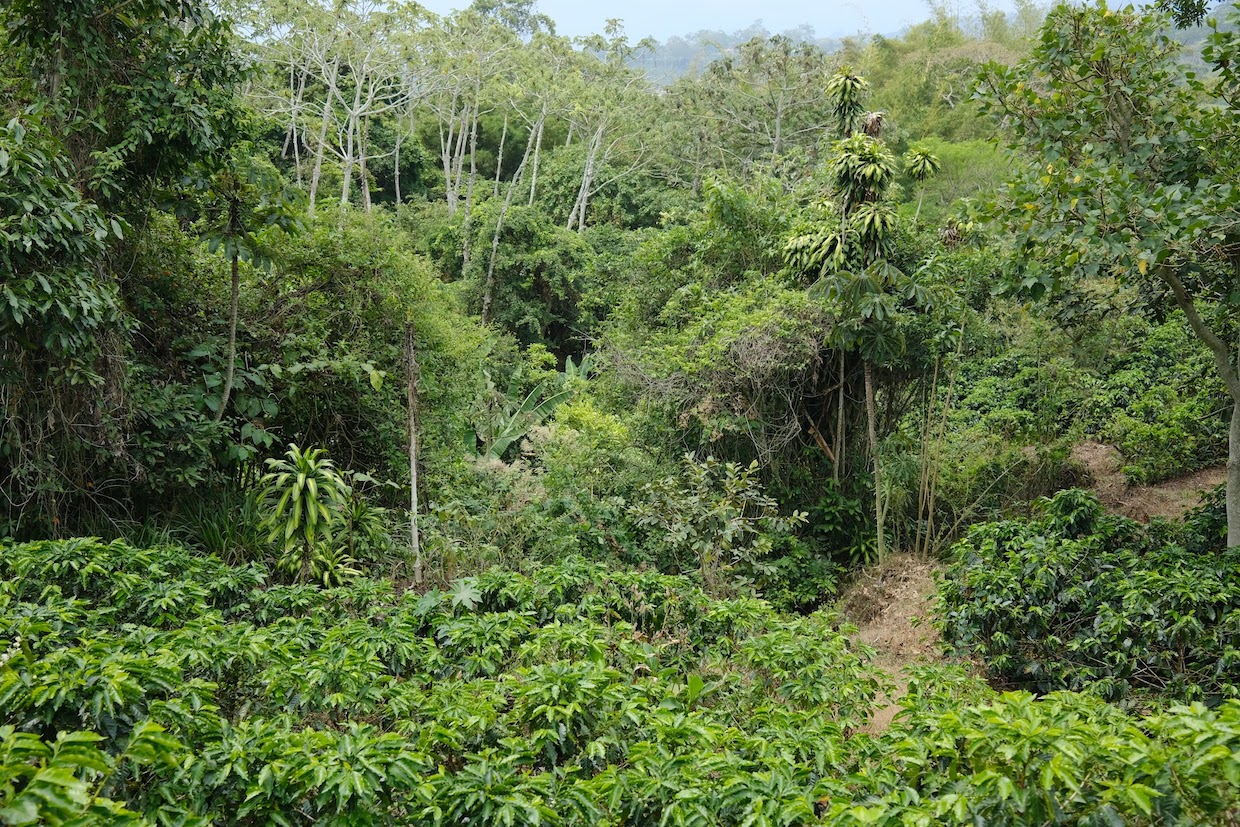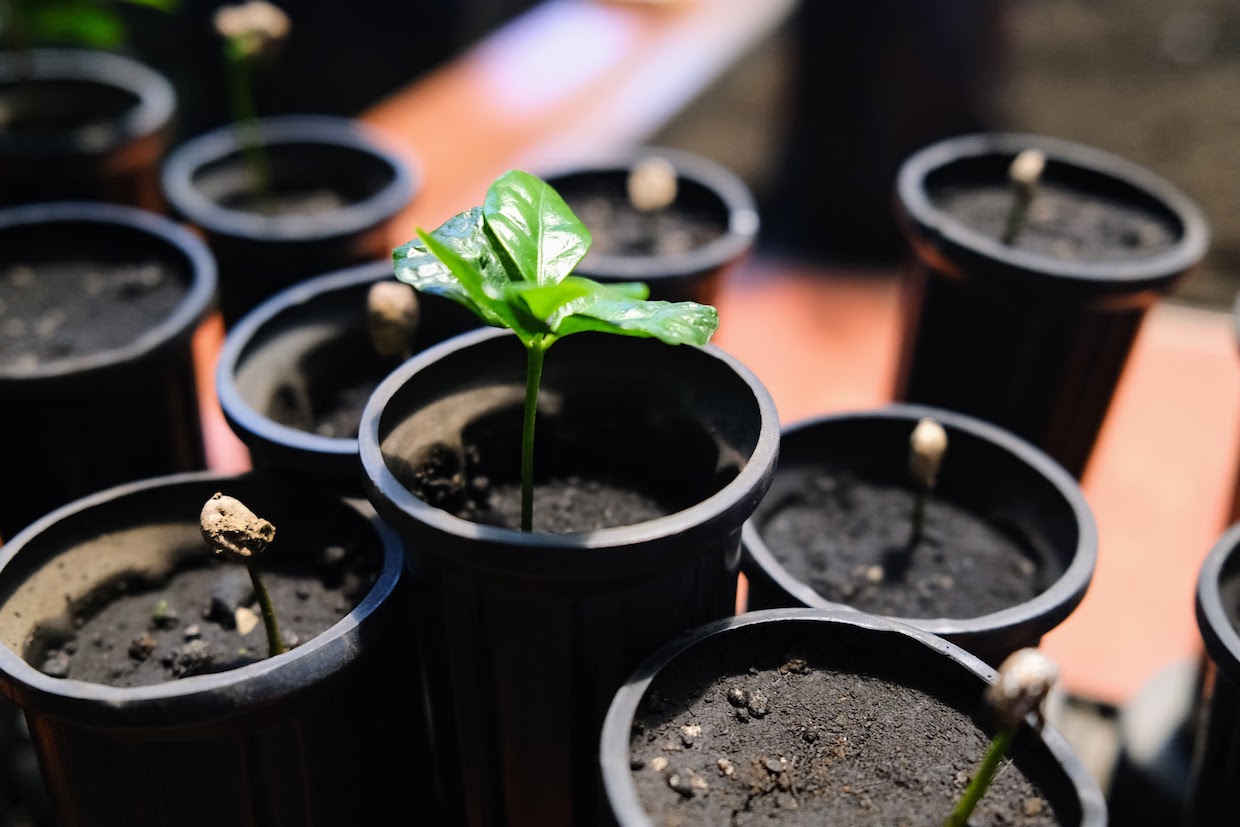For more than a century, the act of planting new trees has helped assuage the collective guilt of humans, the beneficiaries of economic progress at the expense of the earth’s forests.
In recent decades, entire organizations have been built upon the concept that incentivizing new tree planting among farmers can help protect the earth’s delicate ecological balance while also achieving corporate sustainability goals — all while giving consumers the fuzzies for a choice well made.
Yet a major new coffee-focused meta analysis published in the Nature journal Communications Earth & Environment is turning this thinking upside down, suggesting that incentives for planting shade trees to offset intensified full-sun farming may be resulting in more environmental harm than good.
The study found that protecting existing shade trees on coffee lands is exponentially more effective at carbon storage. In fact, more than twice as much above ground carbon could be lost under coffee farm intensification scenarios compared to what could be gained through even the most ambitious tree-planting efforts.
The study suggests that carbon storage efforts in the coffee industry should prioritize conservation, while planting new trees should be considered an added, but lesser, environmental benefit, both for carbon storage and biodiversity.
The research, led by scientists from the Smithsonian’s National Zoo and Conservation Biology Institute (NZCBI) and the Smithsonian Tropical Research Institute, suggests a critical gap in current carbon market incentives.
“There is a lot of money behind planting trees on degraded coffee farms, yet there are basically no financial incentives, outside of the Smithsonian Bird Friendly certification, to protect standing shade trees,” NZCBI ecologist Ruth Bennett said in an announcement of the publication. “To be clear, planting shade trees on monoculture coffee farms is a positive step, but our findings show tree planting alone can’t make up for what you lose when you remove mature shade trees.”
[Note: Bennett, who leads the Smithsonian Bird Friendly certification program, is listed as one of 15 authors of the study. Despite multiple affiliations with the Smithsonian Bird Friendly certification program, none of the authors declared competing interests.]
The study, conducted in collaboration with The Nature Conservancy and CIRAD, synthesized field data from dozens of previous studies across Latin America, Africa and Asia, from full-sun monocrop systems to integrated agroforestry systems.
The researchers compared the carbon stored in each type of farm, then applied these measurements to existing data on global coffee growing that shows 41% is grown in full sun, 35% with minimal shade and 24% under diverse tree cover.
The researchers then used advanced modeling to calculate the maximum possible carbon gains if every sun farm planted trees and the potential losses if farms cut down existing shade trees.
Complex agroforestry systems with remnant native forest trees contained the highest carbon stocks, but the authors noted that those have been disappearing at an alarming pace in favor of intensified production.
The study also uncovered another concerning finding regarding the effectiveness of existing tree planting strategies, which often focus on trees that deliver the fastest and most carbon storage impact. Yet that strategy may negatively affect biodiversity.
“To protect nature and fight climate change, coffee companies need to focus on planting a diversity of the right trees, not just planting a high density of fast-growing trees that capture carbon,” Emily Pappo, the study’s first author and a postdoctoral climate fellow at the Smithsonian, said. “If we don’t prioritize biodiversity on carbon sequestration projects, it won’t accidentally happen.”
The study received financial support from the Knobloch Family Foundation and the Bezos Earth Fund.
Comments? Questions? News to share? Contact DCN’s editors here. For all the latest coffee industry news, subscribe to the DCN newsletter.
Related Posts
Nick Brown
Nick Brown is the editor of Daily Coffee News by Roast Magazine.









Comment